Out of all the top 14 types of yoga styles, Vinyasa yoga can be the most physically demanding.

Because of the continual movement through each pose and each connected breath, Vinyasa yoga (“power yoga” or “flow yoga”) is more of an active and aerobic style of yoga meant to push physical limits.
As always, take this article with a grain of salt – it’s more of an introduction to the material. Before attempting yourself, I would recommend learning in person from a yoga teacher or yoga professional.
This article’s organization:
- General Description
- History and Context
- Beginner Vinyasa Sequence
- Intermediate Vinyasa Sequence
- Conclusion
General Description
“Vinyasa” roughly translates to: “to place in a certain way” or “to place” “in a special way.”
The more common name for this style of yoga is “power” yoga or “flow” yoga, because of the emphasis on energy and connection to the flow of each movement. The most important ideas of this style are centered around the awareness of movement and motion both on the mat and in our lives.
Because of the consistent movements and potentially difficult poses, Vinyasa is a more extreme version of Hatha and Ashtanga derivations. Ashtanga can be traced back to the 200’s B.C.E.!
The benefits of this style of yoga include increased muscle strength and flexibility, improved sense of “calm” and purification, and is known to bring the mind to the “now.”
There’s a very specific sequence of postures that are each held for 5 breaths, while the transition to each posture is only 1 breath long. The connection to the breath is a big reason behind the difficulty as well as the benefits of deep breathing and the “in the moment” motion. So it is important to find “the flow” through these postures.
The best exercises contain repetitive movements, so once you’re acquainted with the appropriate postures, find a rhythm to your Vinyasa sequence for best results physically and mentally.

History and Context
Ashtanga is one of the main sources of inspiration for Vinyasa yoga and although Vinyasa originated from the 20th century, Ashtanga can be traced back to nearly 2,200 years ago.
A yogi named Tirumalai Krishnamacharya (1888 – 1989) developed an Ashtanga school in India where he taught Ashtanga and the beginnings of Vinyasa as one of the most influential yoga teachers in the 20th century. One of his students was Patthabi Jois whose yoga students popularized Vinyasa in the West.
Known as the “moving meditation,” a deepened concentration is found by bodily consciousness throughout the entire practice. The goal is to maintain consistent alignment and deep breathing through each movement.
Beginner Vinyasa Sequence
There are four basic poses in a Vinyasa sequence for beginners:
- Plank Pose (Kumbhakasana)
- Knees-Chest-Chin Pose (Ashtanga Namaskara)
- Cobra Pose (Bhujangasana)
- Downward-Facing Dog Pose (Adho Mukha Svanasana)
Plank Pose – The easiest way to describe the plank pose is by comparing it to being in “standby” for push-ups. While facing downward lying on your stomach, your arms should press against the floor to lift up your body. Keep your arms straight and your body straighter! Bad habits of this include bending hips or legs or having your hands too close together. Make sure your hands land around shoulder width (your shoulders should be above your wrists – important!).

Knees-Chest-Chin Pose – After starting from the plank pose, lower your knees to the floor while keeping your toes tucked on the floor too. Bring your elbows in toward the center of the body and pointing to your back heels. While keeping your hips elevated off the floor, lower your chest until it too reaches the floor and lands between your hands. Allow your chin to gently rest on the floor as well. After holding for one to ten breaths, release tension by lowering your whole body to the floor.

Cobra Pose – Once lying flat on the floor with your body straight after the previous pose, keep your hands on either side of your chest. Allow firm pressure from the floor to press on the tops of your thighs and feet. Straighten your arms again, but continue to maintain your hips glued to the floor. Lift the whole upper half of your body while making sure not to cut off circulation in the lower back (most people just bend the lower back, which is bad, so make sure your whole backbends). After 1 to 5 breaths, slowly lower yourself back to the previous pose where you’re lying flat.
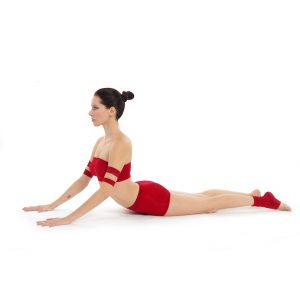
Downward-Facing Dog Pose – Lift yourself up into an all fours position (with hands and knees on the floor) and ensure your hands are facing forward with your fingers spread apart (for balance purposes). Make sure your feet are directly under your hips and begin to lift your hips upward. Press against the floor with your toes tucked and your hands balancing the weight. Once in the upside down “V” pose, stretch out your shoulders by pushing against the floor further. Feel as though your entire arms are detached away from your head. Once held for 1 to 5 breaths, release and bring yourself back to a relaxed position on your hands and knees.
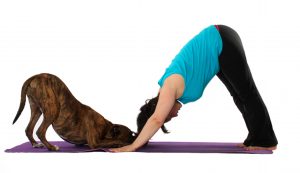
Intermediate Vinyasa Sequence
There are four more advanced poses in a Vinyasa sequence for intermediate yogis:
- Plank Pose (Kumbhakasana)
- Four-Limbed Staff Pose (Chaturanga Dandasana)
- Upward-Facing Dog Pose (Urdhva Mukha Svanasana)
- Downward-Facing Dog Pose (Adho Mukha Svanasana)
Plank Pose – Refer to my description in the previous section for more details.
Four-Limbed Staff Pose – Instead of having straight arms like a “standby” push-up pose, lower yourself by bending your elbows to a 90º angle. Your stomach muscles and legs should be very active while maintaining this pose to ensure no tension on the spine.
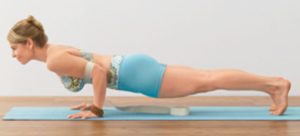
Upward-Facing Dog Pose – Bring yourself to a lying position, prone on the floor. Allow your feet to lie flat with the back of your feet on the floor. Place your hands on either side of your chest and lift your head up. Much like the cobra pose (described above), make sure your spine is fully bent and not just the lower back. But unlike the cobra pose, don’t allow your legs or hips to rest on the floor – maintain the pose by placing your weight through your arms down to your hands (which have spread fingers against the floor). Once held after 1 to 5 breaths, release the tension by bringing yourself to relax on the floor again. OR, continue to a downward-facing dog pose.
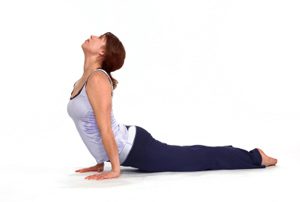
Downward-Facing Dog Pose – Refer to my description of this pose in the above section for more details.
Conclusion
For those experienced with yoga will recognize some of these poses, but doing them in this order with continual movement is what defines it at “power yoga.”
A lot of the difficulty comes in the wrists and arms (the downward dog has some shoulder strength involved too). I would recommend sandwiching Vinyasa sequences with easier poses, for example, Sun Salutation, Vinyasa sequence, and then restorative yoga poses. Offers a great warm-up, exertion, and then relaxation.
But like I had said before, please consult your yoga teacher for some one-on-one time or possibly even tutoring within a class setting before you try this at home. Benefits are more powerful when achieved with good technique and yes, there is a wrong way of doing this too.
Also, no need to look further for yoga mats. I’ve compared 40 different yoga mats and found some great, affordable options (don’t waste your money on cheap ones like I did years ago!).
Let me know if or when you experience Vinyasa yoga yourself! Let me know what you think in the comments below!
Thanks for reading! Consider signing up for the newsletter for updates on the next yoga inspired articles!
Best of luck with all your yoga activities!
Chase
March 2017

SOURCES:
English Yoga Berlin – Vinyasa History
One Flow Yoga Studio – Vinyasa
Yoga Outlet – Knees Chest Chin Pose
Ekhart Yoga – Downward Facing Dog

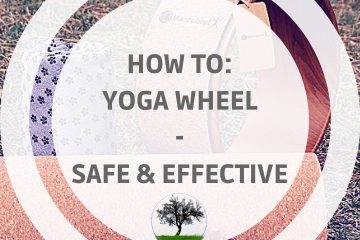
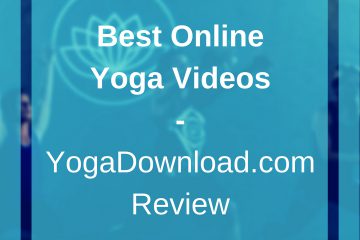
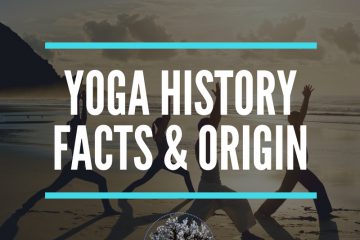
0 Comments